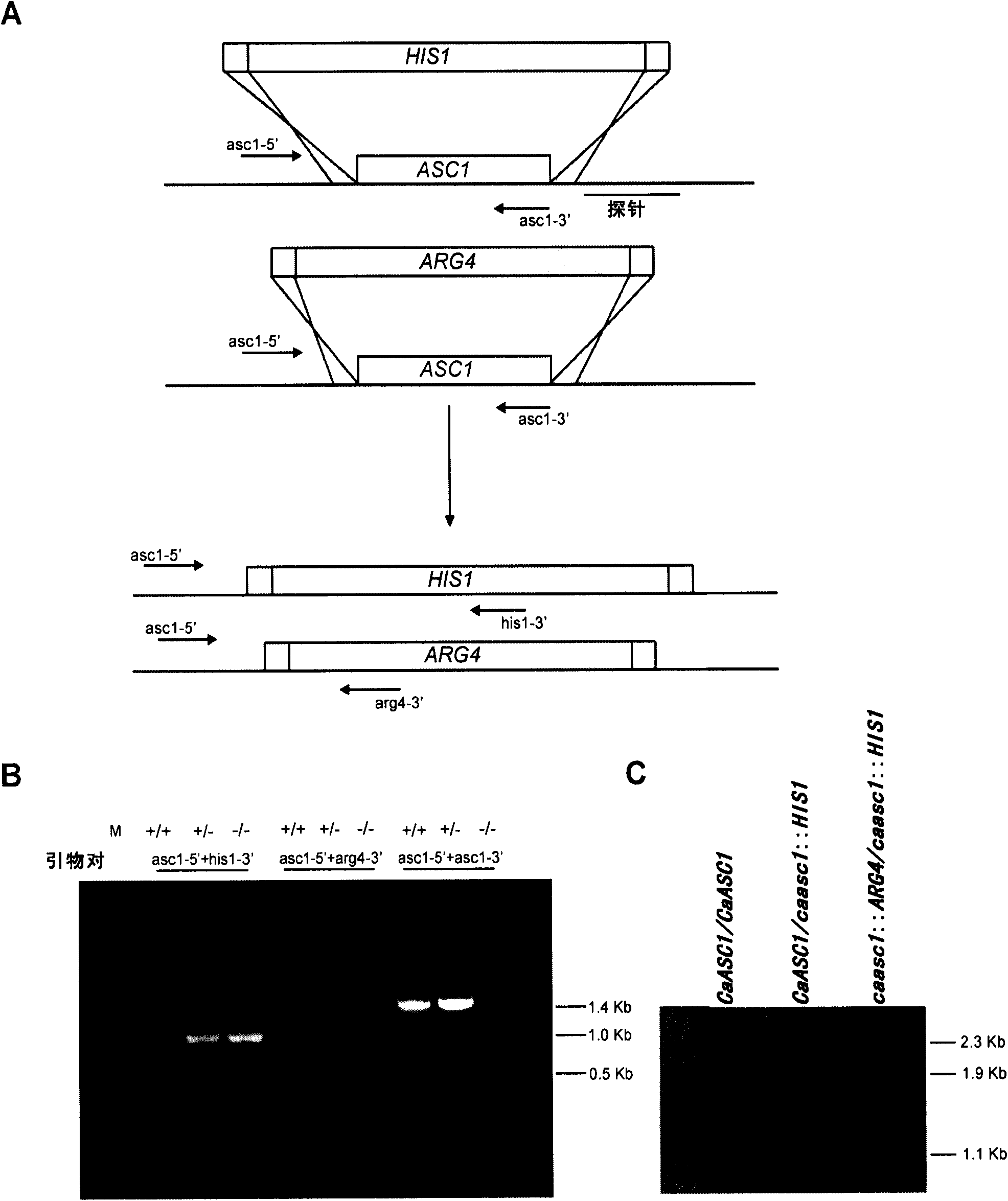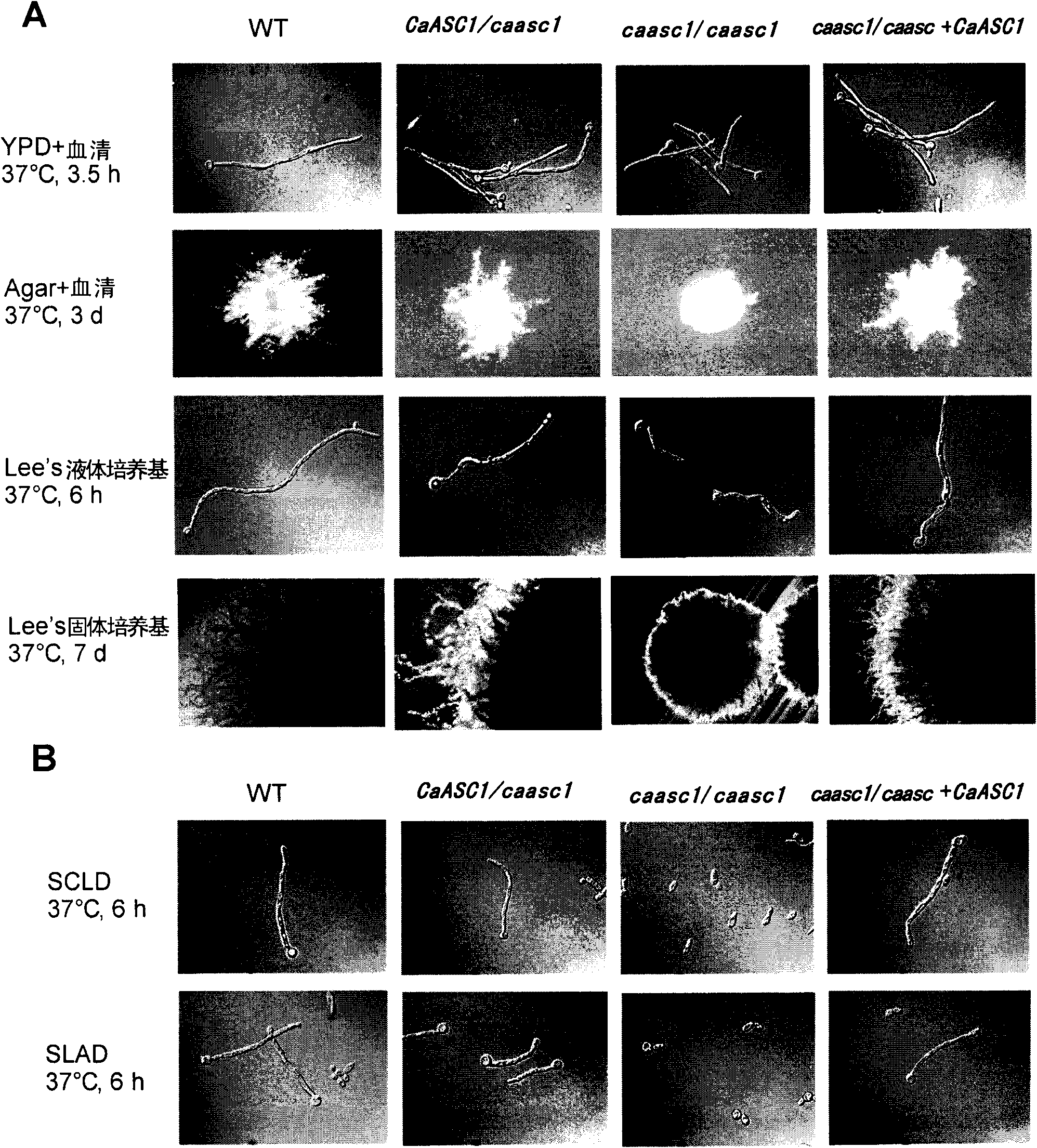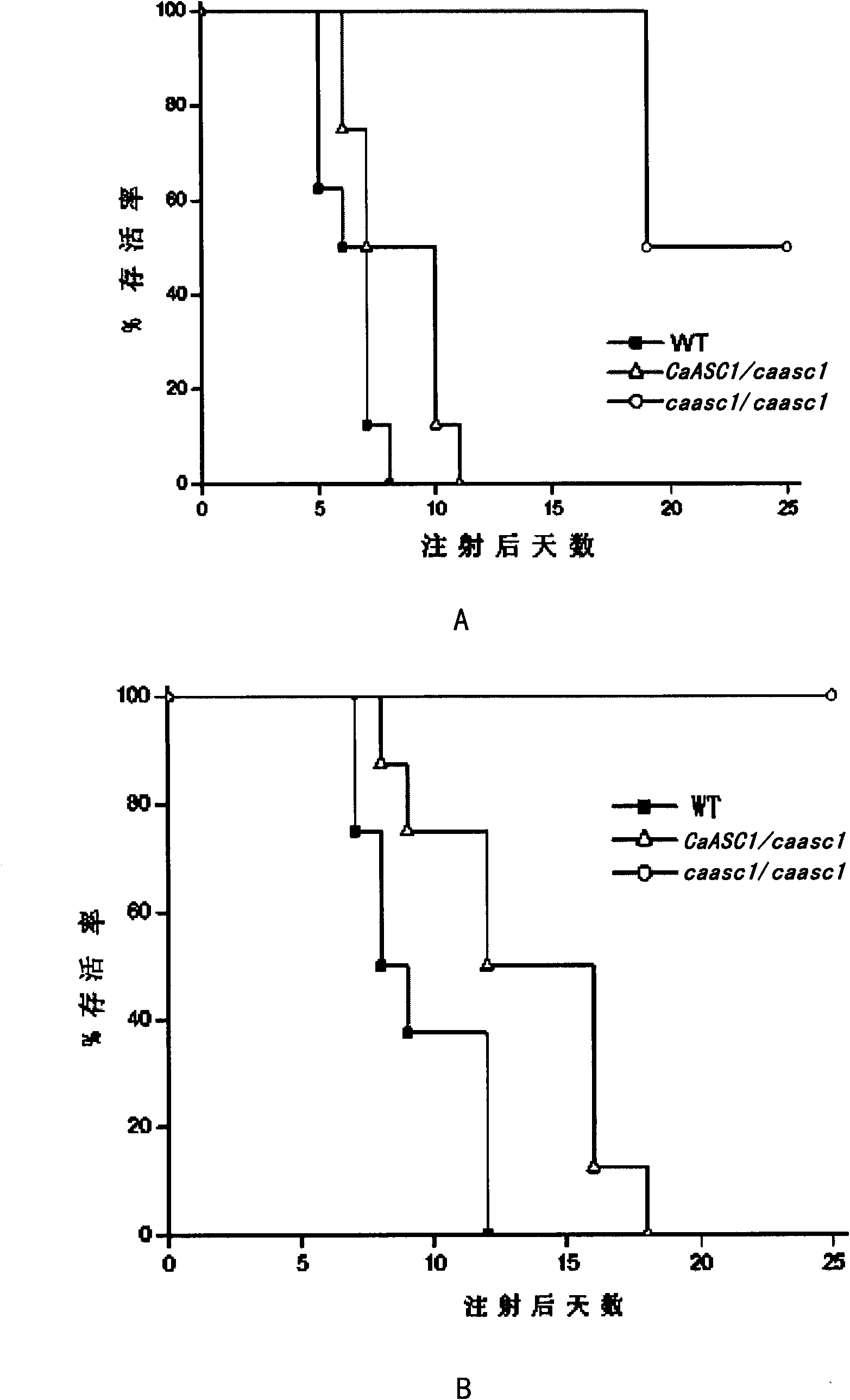Factor for regulating toxicity of Candida albicans and its application
A technology of Candida albicans and toxicity, which is applied to the factors regulating the toxicity of Candida albicans and its application field, and can solve the problems that pathogenic factors and pathogenic mechanisms are not fully studied and the like.
- Summary
- Abstract
- Description
- Claims
- Application Information
AI Technical Summary
Problems solved by technology
Method used
Image
Examples
Embodiment approach
[0059] Monoclonal antibodies can be prepared using hybridoma technology (see Kohler et al., Nature 256; 495, 1975; Kohler et al., Eur.J.Immunol.6:511, 1976; Kohler et al., Eur.J.Immunol.6:292 , 1976; Hammerling et al., In Monoclonal Antibodies and T Cell Hybridomas, Elsevier, N.Y., 1981). After the hybridoma cells are obtained, monoclonal antibody production techniques well known to those skilled in the art can be used to mass-produce the monoclonal antibody of the present invention. As an embodiment of the present invention, the monoclonal antibody can be prepared by the following preparation method, which includes the steps of: (1) providing adjuvant pretreated mice; (2) intraperitoneally inoculating the mice The hybridoma cells secrete monoclonal antibodies; (3) ascitic fluid is extracted, and the monoclonal antibodies are obtained by separation.
[0060] As a mode of the present invention, a composition is provided, which contains an effective amount (such as 0.0001-10wt%...
Embodiment 1
[0083] Example 1, knockout of CaASC1 gene in Candida albicans
[0084] In order to study the function of CaAsc1 in the morphogenesis and virulence expression of Candida albicans, the present inventors constructed a caasc1 / caasc1 deletion strain. Using the PCR homologous recombination strategy, in the wild-type strain BWP17 (ura-his-arg-) (see Wilson, R.B., D. Davis, and A.P. Mitchell, Rapid hypothesis testing with Candida albicans through gene disruption with short homology regions.J Bacteriol , 1999.181(6): p.1868-74.) knocked out the CaASC1 gene, the knockout strategy is as follows figure 1 As shown in A.
[0085] The PCR primers used for knockout are as follows:
[0086] CaASC1-5DR:
[0087] 5'-GTTAATTTCATTTCCCTTCAATTTCTTTTCTTTTCTTCTTTTTTAAAAAACAAACAATCAATTTATCTACGTTTTTCCCAGTCACGACGTT;
[0088] CaASC1-3DR:
[0089] 5'-TTTCCCACAAAAAAACAAAATCTATACAAAAAAAACTTCTTGTTGTATGTTAAAATTTAGAATTAAATTTGTGGAATTGTGAGCGGATA;
[0090] 69 bases in the primers CaASC1-5DR and CaASC1-3DR ar...
Embodiment 2
[0093] Example 2, the impact of knockout of CaASC1 gene on Candida albicans
[0094]The CaASC1 gene was knocked out in Candida albicans by homologous recombination. PCR and Southern blot analysis proved that the knockout was successful.
[0095] In order to detect whether the deletion of the CaASC1 gene affects the mycelial development of Candida albicans, the inventors tested the morphology of the following strains under the condition of mycelial induction. Serum is a strong hyphae-inducing factor. Adding 10% (v / v) serum to the rich liquid medium YPD and culturing at 37°C is a standard hyphae induction condition. Cultivate under these conditions for 3.5 hours, wild-type strain SC5314 (WT) (see Fonzi, W.A.and M.Y.Irwin, Isogenic strain construction and gene mapping in Candida albicans.Genetics, 1993.134 (3): p.717-28.) and The revertant strains of CaASC1 (caasc1 / caasc1+CaASC1) could form mycelium, while the CaASC1 / caasc1 single-copy deletion strain formed shorter mycelium. ...
PUM
 Login to View More
Login to View More Abstract
Description
Claims
Application Information
 Login to View More
Login to View More - R&D
- Intellectual Property
- Life Sciences
- Materials
- Tech Scout
- Unparalleled Data Quality
- Higher Quality Content
- 60% Fewer Hallucinations
Browse by: Latest US Patents, China's latest patents, Technical Efficacy Thesaurus, Application Domain, Technology Topic, Popular Technical Reports.
© 2025 PatSnap. All rights reserved.Legal|Privacy policy|Modern Slavery Act Transparency Statement|Sitemap|About US| Contact US: help@patsnap.com



